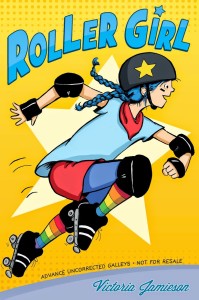 Serena Williams just won her twenty-first singles grand-slam title, and yet there has been more discussion about her body and femininity than about the sheer brilliance of her performance or her dedication to her sport. The U.S. Women’s National Soccer team won the World Cup in impressive fashion, beating several amazingly talented teams to do so. But in the lead up to the championship game and in the post-tournament commentary, there has been much discussion from various corners of the world about the attractiveness of certain players, the need for the players to vamp up their sex appeal to attract more fans to the game, and a dismissive attitude toward these incredible athletes as dedicated professionals deserving to be compensated equal to their successes.
Serena Williams just won her twenty-first singles grand-slam title, and yet there has been more discussion about her body and femininity than about the sheer brilliance of her performance or her dedication to her sport. The U.S. Women’s National Soccer team won the World Cup in impressive fashion, beating several amazingly talented teams to do so. But in the lead up to the championship game and in the post-tournament commentary, there has been much discussion from various corners of the world about the attractiveness of certain players, the need for the players to vamp up their sex appeal to attract more fans to the game, and a dismissive attitude toward these incredible athletes as dedicated professionals deserving to be compensated equal to their successes.
I can think of no better time to review a book about girls striving to be strong, intimidating athletes. Even better that it is a funny and honest graphic novel for adolescent readers starring a blue-haired twelve-year-old who makes up for her lack of natural athletic talent with determination, passion, and an impressive competitive nature.
K.T. Horning recently commented on Twitter that if Alison Bechdel created books for children, she might create a book like Roller Girl. I couldn’t agree more, but I’m glad that Roller Girl (Dial Books for Young Readers, the Penguin Group, 2015) was created by Victoria Jamieson, who infused it with her love for the sport of roller derby and her respect for its athletes. Jamieson is on a roller derby team (check out her bio for her derby name), and shares with young readers a rare insider’s view of the sport, clearly and smoothly explaining its mechanics and exploring its subculture.
Twelve-year-old Astrid Vasquez has always done everything with her best friend Nicole, but just as Astrid is discovering her passion for roller derby, Nicole is becoming more interested in ballet, boys, and impressing Astrid’s nemesis, Rachel. And while Astrid makes a new friend at roller derby camp, the pressures of competition complicate their budding friendship. Through both relationships Astrid works through the joy and heartache of adolescent friendships, and is forced to consider the ways in which she isn’t always the best friend.
Roller Girl will surely increase the number of girls fanning their local roller derby teams, making lists of potential derby names, and strapping on skates of their own. But more importantly, Roller Girl will also show its young readers girls who are striving to be strong and to be fierce competitors, and who are doing both as their most essential selves.
Adolescents, especially girls, are feeling pressure younger and younger to look and act a certain way to purportedly be attractive, and to form romantic attachments at younger ages. We need books like Roller Girl to offer young readers alternative images of strength and beauty, and demonstrate the joy that can be derived from pursuing your own passions.
Astrid’s friend Nicole is starting to be interested in boys. In comparison, Astrid is more interested in roller derby and her friendships. Some readers will read Astrid’s disinterest in boys as Astrid being in a different developmental place than Nicole. That reading will offer comfort and kinship for similarly inclined young readers. But for young queer readers, Astrid may be more of a kindred spirit. Her obsession with older player Rainbow Bite can be read as aspirational, a desire to be like Rainbow Bite. Or it can easily be read as a crush. The beauty of Roller Girl is that it will offer readers a variety of characters with which to identify, including Astrid and her friend Nicole. Jamieson’s illustrations include racial diversity, diverse body types, and a delicious variety of self-expression, and Astrid’s apparently single-parent family also adds subtle dimension to the story.
Young, gifted athletes receive a lot of support and encouragement, as do many boys who are not particularly gifted. But girls like Astrid, who aren’t naturally gifted athletically, can be overlooked. Roller Girl may encourage other Astrids to look for their own passions, to find their core fierceness, and to develop their own strengths.
Roller Girl will offer many young readers an entry into the world of roller derby, but it will also offer much to consider about friendship, body image, identity, and what it means to be strong.
1 comment for “Review: Roller Girl by Victoria Jamieson”